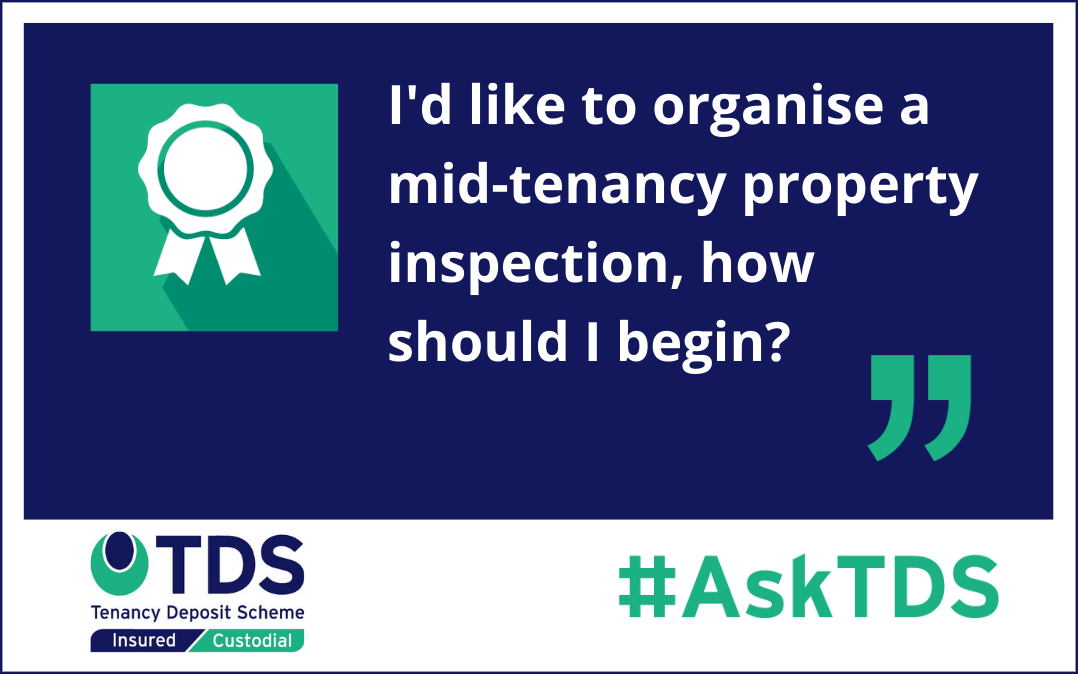The Tenancy Deposit Scheme (TDS) was asked where to begin when scheduling a mid-tenancy property inspection? Here’s its response for letting agents and landlords.
This time of year is an excellent opportunity to schedule a mid-tenancy inspection of your rental properties. You should be looking out for essential maintenance work, any damage leftover from the winter months, and not forgetting the external areas of the property.
How often should the property be inspected?
Property inspections should be detailed within the tenancy agreement. Typically, they are every six months to yearly occurrences. However, you may want to inspect the property more often at the start of a new tenancy to assist tenants with questions that may arise, such as how to use appliances.
In this case, it’s best to agree on this with your tenants at the beginning of the tenancy.
Prolonged frequent visits could become an inconvenience to your tenant – after all, they have the ‘right to ‘quiet enjoyment’, and no one likes to keep being disturbed at home.
How far in advance do I need a tenant’s permission to inspect the property?
Your tenant will need at least 24-hours notice before you enter the property, preferably through email or a letter delivered to their postal address.
Ideally, you should give them at least a week’s notice so they can arrange for time off work if necessary. This also concerns allowing external suppliers to enter the property, for example, a professional check of the gas or electrical appliances.
Prolonged frequent visits could become an inconvenience to your tenant – after all, they have the ‘right to ‘quiet enjoyment’, and no one likes to keep being disturbed at home.
What if the tenant declines or doesn’t respond?
If your tenant refuses you access, try to keep communications open and find out why. Aim to be flexible and work around their schedule.
It helps to remind the tenant that the inspection is for their benefit, explain you need to ensure the property remains safe and habitable for them, and get ahead of any potential issues that could build up, such as mould.
However, if the tenant is not responding and you are increasingly concerned, TDS offers a free mid-tenancy reconciliation service, should you need support.
What should my mid-tenancy property inspection cover?
As a helpful outline, your inspection checklist should cover these essential areas:
- The overall condition of the property, including the walls, floors, windows, doors and outside space.
- Check all appliances are working and in good condition. Consider if any need replacing.
- Check the hot water and ensure the boiler is in good condition or has been recently serviced. If there are any issues, provide a qualified engineer to fix the problem.
- Test smoke alarms and CO alarms are in full working order.
- Check the electrics; if there are signs of damage or any issues mentioned by the tenant, ensure these are safely and swiftly resolved.
- Damp and mould are common issues in bathrooms and kitchens; check for dark patches, flaky paintwork or unpleasant musty smells.
- Check the plumbing for leaks or dripping taps.
- Review any outside space for problems such as blocked drains or gutters, fence damage, or overgrown areas that need attending to.
- A check for breaches to the tenancy agreement, for example, evidence of smoking or pets.
Advice for Agents
Completing a detailed inventory and check-in at the beginning of tenancy is a great way to capture changes during the mid-tenancy inspection, and remind yourselves of the condition of each area at the start of the tenancy.
TDS Academy runs two expert-led courses in partnership with Inventory Hive, covering all things inventory, check-in, check-out, and mid-tenancy inspections. You’ll earn CPD points for attending.
The Tenancy Deposit Scheme (TDS) is one of The Letting Partnership’s trusted partners. For more details of who we work with see our Working in Partnership page
* * *

